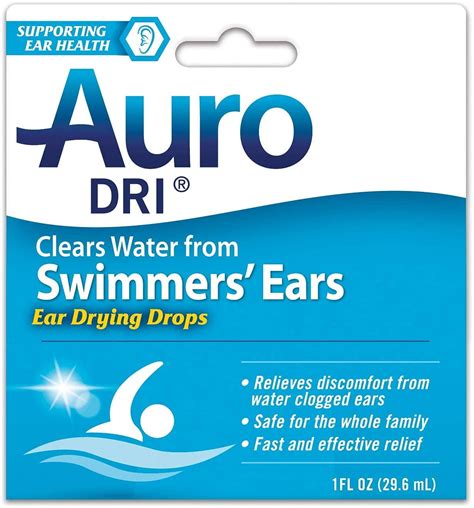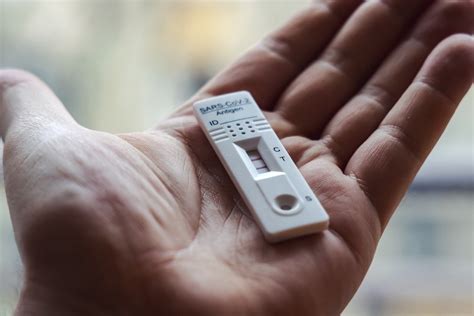The importance of ear health cannot be overstated, and one aspect of maintaining good ear hygiene is ensuring that the ears are properly dried after exposure to water. This is where ear drying drops come into play, offering a simple yet effective solution for preventing bacterial and fungal infections that thrive in moist environments.
To delve into the world of ear drying drops, it’s essential to first understand the anatomy of the ear and how it’s naturally equipped to handle moisture. The outer ear canal is lined with ceruminous and sebaceous glands that produce cerumen, or earwax, which helps to protect the ear from dirt, dust, and other small particles. However, when the ear is exposed to excessive moisture, such as after swimming or showering, the natural balance can be disrupted, potentially leading to infections like swimmer’s ear (otitis externa).
How Ear Drying Drops Work
Ear drying drops are specially formulated to help evaporate moisture from the ear canal, thereby restoring the ear’s natural environment and reducing the risk of infection. These drops typically contain ingredients such as isopropyl alcohol or anhydrous glycerin, which have drying properties. When applied into the ear canal, these ingredients help to dry out the area, making it less conducive to the growth of bacteria and fungi.
Benefits of Using Ear Drying Drops
- Prevention of Infections: By reducing moisture in the ear canal, these drops can significantly lower the risk of developing infections such as otitis externa.
- Comfort: Reducing moisture can also alleviate discomfort or itching associated with wet ears.
- Ease of Use: Ear drying drops are generally easy to apply, making them a convenient option for post-water exposure care.
Comparative Analysis: Ear Drying Drops vs. Other Methods
While ear drying drops are a popular choice for drying the ears, they are not the only method available. Other approaches include using a dry towel to gently pat the outer ear, avoiding the use of cotton swabs (Q-tips) which can push earwax further into the ear canal, and standing with the affected ear facing downwards to allow water to drain out naturally.
- Ear Drying Drops: These offer a direct and effective method for drying the ear canal, with the added benefit of ingredients that can help prevent infection.
- Over-the-Counter (OTC) Earwax Dissolvers: These are designed to break down earwax but may not address the issue of moisture directly.
- Professional Ear Cleaning: In some cases, especially where there is an accumulation of earwax, professional cleaning by a healthcare provider may be necessary.
Historical Evolution of Ear Care
The concept of ear care and the use of substances to dry and protect the ears dates back thousands of years. Ancient civilizations used various natural ingredients, such as oils and waxes, to clean and protect their ears. The development of modern ear drying drops represents a significant advancement in this area, offering a convenient, effective, and safe method for maintaining ear health.
Expert Perspective: The Importance of Ear Hygiene
According to ear, nose, and throat (ENT) specialists, maintaining good ear hygiene is crucial for preventing infections and other complications. This includes regular cleaning of the outer ear and the cautious use of ear drying drops after exposure to water. Experts also advise against using objects like cotton swabs to clean inside the ear, as this can cause more harm than good.
Future Trends in Ear Care
As research continues into the prevention and treatment of ear infections, we can expect to see advancements in the formulation of ear drying drops and other ear care products. This might include the development of drops with additional antibacterial or antifungal properties, or products that are more environmentally friendly and sustainable.
Decision Framework: Choosing the Right Ear Drying Drops
When selecting ear drying drops, there are several factors to consider:
- Active Ingredients: Look for products containing proven drying agents like isopropyl alcohol.
- User Reviews: Check for feedback from other users to gauge effectiveness and any potential side effects.
- Brand Reputation: Opt for well-established brands with a history of producing quality ear care products.
- Price: While more expensive does not always mean better, be wary of very cheap options that may contain ineffective or harmful ingredients.
Step-by-Step Guide to Using Ear Drying Drops
- Read the Instructions: Before use, read the label carefully to understand the recommended dosage and any precautions.
- Tilt Your Head: Position the affected ear upwards and gently pull the outer ear upwards and backwards for adults (or downwards for children) to straighten the ear canal.
- Apply the Drops: Place the recommended number of drops into the ear canal.
- Stay Still: Allow the drops to work for a few minutes before tilting your head to the other side to let the drops drain out.
- Repeat if Necessary: Follow the product’s guidelines for how often to apply the drops.
Pro-Con Analysis of Ear Drying Drops
Pros: - Effective in reducing moisture and preventing infections. - Generally easy to use. - Available over-the-counter, making them accessible without a prescription.
Cons: - May cause discomfort or a sensation of burning in some users. - Not suitable for everyone, especially those with certain ear conditions or perforated eardrums. - Overuse can lead to dryness and irritation of the ear canal.
FAQ Section
What are ear drying drops used for?
+Ear drying drops are used to help dry the ear canal after exposure to water, preventing infections such as swimmer's ear.
How do I use ear drying drops?
+To use ear drying drops, tilt your head to the side, pull the outer ear gently, and place the recommended number of drops into the ear canal. Let it work for a few minutes before tilting your head the other way.
Can anyone use ear drying drops?
+No, ear drying drops are not suitable for everyone, especially those with certain ear conditions, a perforated eardrum, or other specific health issues. It's advisable to consult a healthcare professional before use.
In conclusion, ear drying drops represent a valuable tool in the maintenance of ear health, offering a convenient and effective way to prevent infections by reducing moisture in the ear canal. By understanding how these drops work, their benefits, and how to use them properly, individuals can take proactive steps towards protecting their ear health. Remember, the key to effective ear care is a combination of good hygiene practices, awareness of potential risks, and the appropriate use of products like ear drying drops.



